Russula queletii (Russula queletii)
- Division: Basidiomycota (Basidiomycetes)
- Subdivision: Agaricomycotina (Agaricomycetes)
- Class: Agaricomycetes (Agaricomycetes)
- Subclass: Incertae sedis (of uncertain position)
- Order: Russulales (Russulovye)
- Family: Russulaceae (Russula)
- Genus: Russula (Russula)
- Type: Russula queletii (Russula Kele)
:
- Russula sardonia f. of the skeleton
- Russula flavovirens
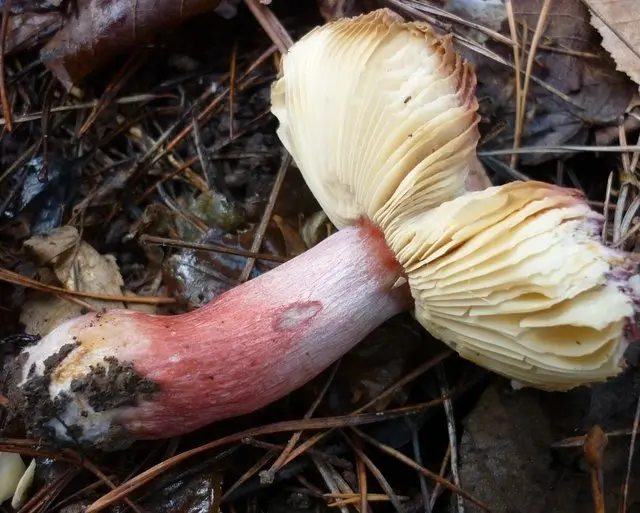
Russula Kele is considered one of those few russulas that can be quite easily identified by the combination of the following features:
- the predominance of purple flowers in the color of the hat and legs
- growing near conifers
- whitish-cream spore print
- pungent taste
Forms mycorrhiza with conifers, especially with spruces and some types of pines (“two-needled pines”, two-needle pines). Curiously, the European russula Kele is considered to be more associated with firs, while the North American ones come in two “versions”, some associated with spruce and others associated with pines.
head: 4-8, up to 10 centimeters. In youth it is fleshy, semicircular, convex, later – plano-convex, procumbent with age, depressed procumbent. In very old specimens, the edge is wrapped up. Sticky, sticky in young mushrooms or in wet weather. The skin of the cap is smooth and shiny.
The color of the cap in young specimens is dark blackish-violet, then it becomes dark purple or brownish-violet, cherry-violet, purple, purplish-brown, sometimes greenish shades may be present, especially along the edges.
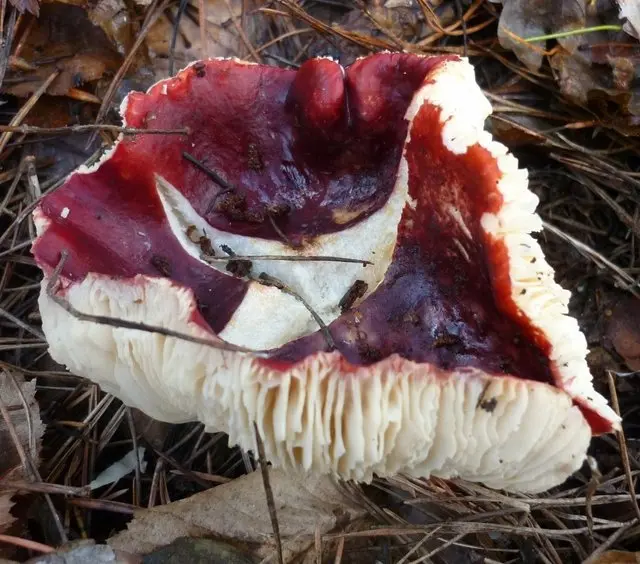
plates: widely adherent, thin, white, becoming creamy with age, later yellowish.
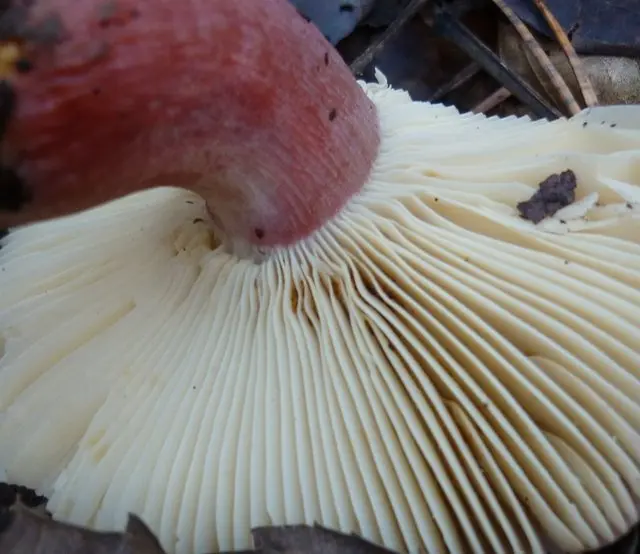
Leg: 3-8 centimeters long and 1-2 centimeters thick. The color is pale purple to dark purple or pinkish purple. The base of the stem can sometimes be colored in shades of yellow.
Smooth or slightly pubescent, matte. Thick, fleshy, whole. With age, voids form, the pulp becomes brittle.
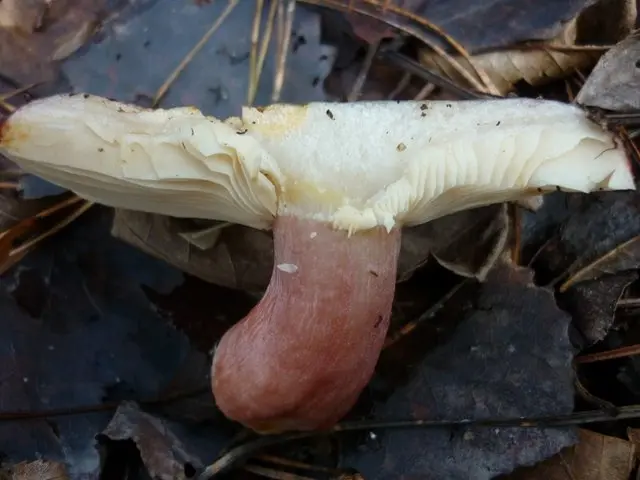
Pulp: white, dense, dryish, brittle with age. Under the skin of the hat – purple. Almost does not change color on the cut and when damaged (may turn yellow quite a bit).
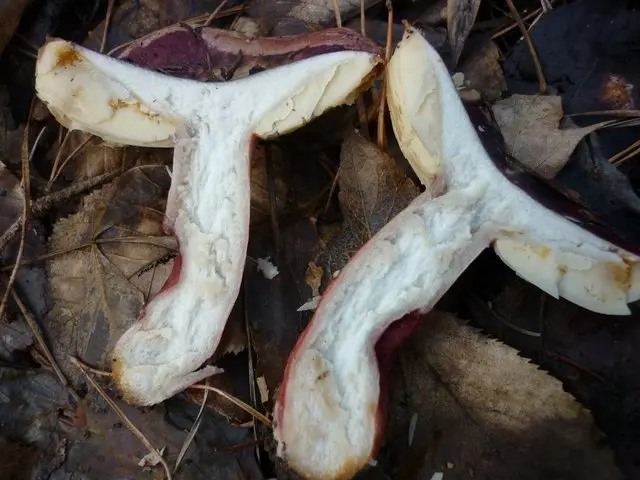
spore powder: white to cream.
Споры: ellipsoid, 7-10 * 6-9 microns, warty.
Chemical reactions: KOH on the cap surface produces reddish-orange colors. Iron salts on the surface of the stem: pale pink.
Smell: pleasant, almost indistinguishable. Sometimes it can seem sweetish, sometimes fruity or sour.
Taste: caustic, sharp. Unpleasant.
It grows singly or in small groups in coniferous and mixed forests (with spruce).
It occurs from mid-summer to late autumn. Different sources indicate different ranges: July – September, August – September, September – October.
Widely distributed in the Northern Hemisphere (possibly in the Southern).
Most sources classify the mushroom as inedible due to its unpleasant, pungent taste.
Probably the mushroom is not poisonous. Therefore, those who wish can experiment.
Perhaps soaking before salting helps get rid of the tartness.
One thing is clear: when conducting experiments, it is advisable not to mix Kele russula with other mushrooms. So that it would not be a pity if you have to throw it away.
It’s funny that different sources describe so differently which part of the cap is easily peeled off. So, for example, there is a mention that this is “russula with non-peeling skin.” There is information that the skin is easily removed by half and even 2/3 of the diameter. Whether this depends on the age of the fungus, on the weather or on the growing conditions is not clear. One thing is obvious: this russula should not be identified on the basis of “removable skin”. As, however, and all other types of russula.
When dried, Russula Kele almost completely retains its color. The cap and stem remain in the same purple range, the plates acquire a dull yellowish tint.
Photo: Ivan









